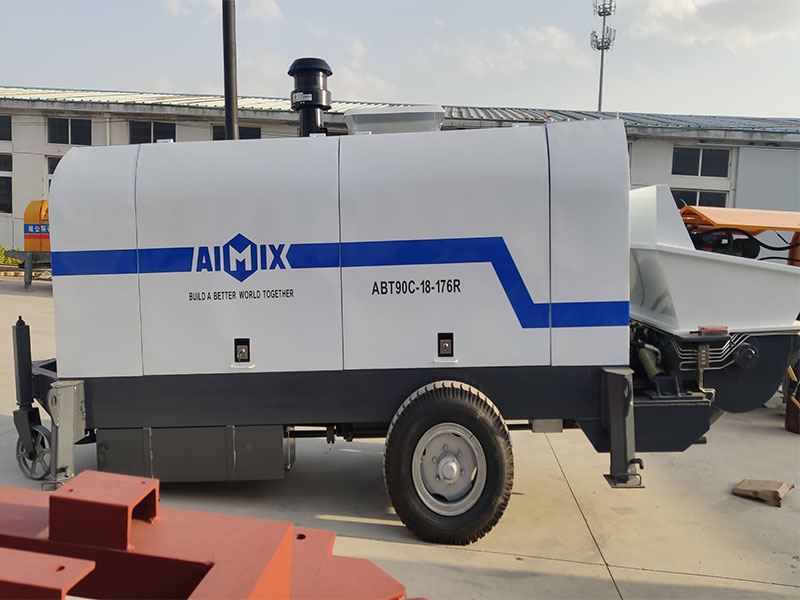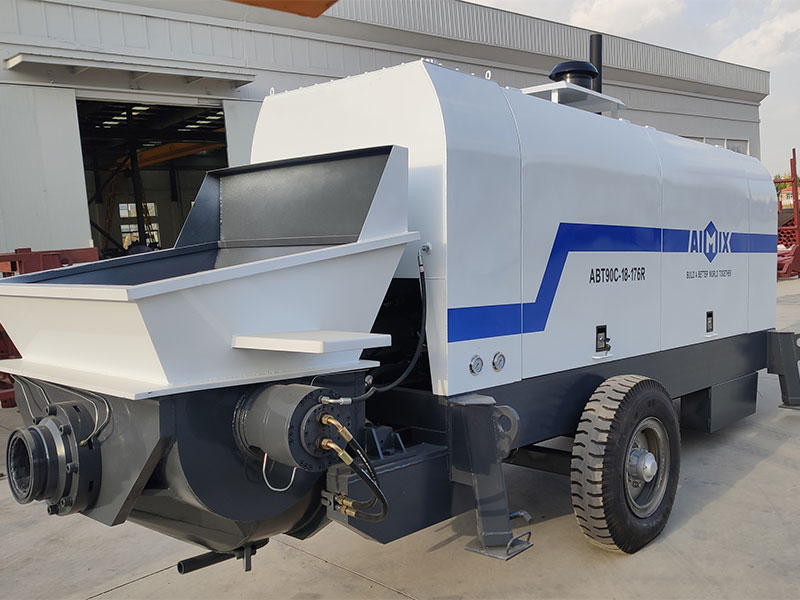Concrete pumps are invaluable tools in the construction industry, enabling the precise and efficient placement of concrete in various structures. After each use, it is crucial to clean the concrete pump thoroughly to maintain its functionality, prevent costly repairs, and ensure workplace safety.
Why Cleaning is Essential
Cleaning a concrete pump is not just a matter of appearance; it is fundamental for the following reasons:
Preventing Blockages: Leftover concrete can harden inside the concrete pumps, causing blockages that impede the flow of fresh concrete during the next use.
Maintaining Efficiency: Regular cleaning ensures that the pump operates at its optimal efficiency, reducing downtime and increasing productivity on the job site.
Extending Lifespan: Proper maintenance, including cleaning, can extend the lifespan of your concrete pump, protecting your investment.
Ensuring Workplace Safety: Residual concrete can be a safety hazard, leading to accidents or injuries if not removed promptly.

Tools and Materials Required
Before you begin the cleaning process, gather the necessary tools and materials:
Water source: Sufficient water supply, either from a hose or a dedicated water tank.
Air compressor: For blowing out residual concrete.
Cleaning solutions: Such as a concrete remover or a mixture of water and mild detergent.
Safety equipment: Gloves, goggles, and protective clothing to safeguard against splashes and potential contact with cleaning agents.
Step-by-Step Guide to Cleaning a Concrete Pump
Follow these steps to clean your concrete pump thoroughly:
1. Preparation
Begin by ensuring that the concrete line pump is in a safe and stable position. Turn off the engine and any power sources connected to the pump. Wear your safety equipment, including gloves, goggles, and appropriate clothing.
2. Pump Out Excess Concrete
Before cleaning, pump out any excess concrete from the delivery system. This can be achieved by running the pump in reverse to push out the remaining concrete.
3. Initial Rinse
Using a hose or a water tank, start with an initial rinse of the concrete pump. This helps to remove loose concrete and prepare the surface for more thorough cleaning.
4. Air Blowout
Connect the air compressor to the concrete pump. With the air compressor, blow out any remaining concrete residue from the hoses and delivery system. Be sure to do this carefully, as high-pressure air can dislodge hardened concrete, creating a safety hazard.

5. Application of Cleaning Solution
Prepare your chosen cleaning solution, following the manufacturer’s instructions if you are using a commercial concrete remover. Alternatively, you can create a mild cleaning solution by mixing water with a small amount of detergent. Apply the cleaning solution to all surfaces that came into contact with concrete, including the hopper, hoses, and the pump itself.
6. Scrubbing
Use brushes or scrubbing tools to agitate the cleaning solution on the surfaces. Pay special attention to areas with stubborn concrete buildup. Continue scrubbing until the concrete residue loosens and starts to dissolve.
7. Soaking
Allow the cleaning solution to soak on the surfaces for a period specified by the product’s instructions or until you observe that the concrete is softening and becoming easier to remove. This soaking step is essential for effective cleaning.
8. Rinse
Thoroughly rinse all surfaces with a high-pressure hose or water source. Ensure that all traces of the cleaning solution, as well as any remaining concrete residue, are washed away. Pay particular attention to hard-to-reach areas.
9. Final Inspection
After rinsing, inspect all components of the mini concrete pump to ensure that no concrete or cleaning solution residue remains. Look for any signs of wear or damage that may require repair.
10. Lubrication and Maintenance
Once the concrete pump is clean and dry, consider applying a suitable lubricant to moving parts, such as seals and pistons, to prevent corrosion and ensure smooth operation. Regular maintenance is crucial for the longevity of your equipment.
Safety Precautions
Safety is paramount during the concrete pump cleaning process. Here are some essential safety precautions to keep in mind:
Protective Gear: Always wear the appropriate safety gear, including gloves, goggles, and protective clothing, to shield yourself from splashes and potential contact with cleaning agents.
Ventilation: Ensure that the cleaning area is well-ventilated to prevent the inhalation of fumes from cleaning agents.
Handling Cleaning Agents: If using commercial concrete removers, follow the manufacturer’s instructions for safe handling and disposal. These products may contain chemicals that require careful use.
Air Compressor Safety: Be cautious when using the air compressor to blow out concrete residue, as high-pressure air can be dangerous. Ensure that all personnel are at a safe distance during this step.
Conclusion
Properly cleaning a stationary concrete pump is not only a matter of routine maintenance but also an essential practice to ensure the longevity and efficiency of the equipment. Neglecting this crucial step can lead to blockages, operational issues, and safety hazards. By following the step-by-step guide outlined above and taking the necessary safety precautions, you can ensure that your concrete pump remains in excellent working condition and continues to contribute to successful construction projects. Remember that regular cleaning and maintenance are key to preserving your investment and keeping your concrete pump performing at its best.
